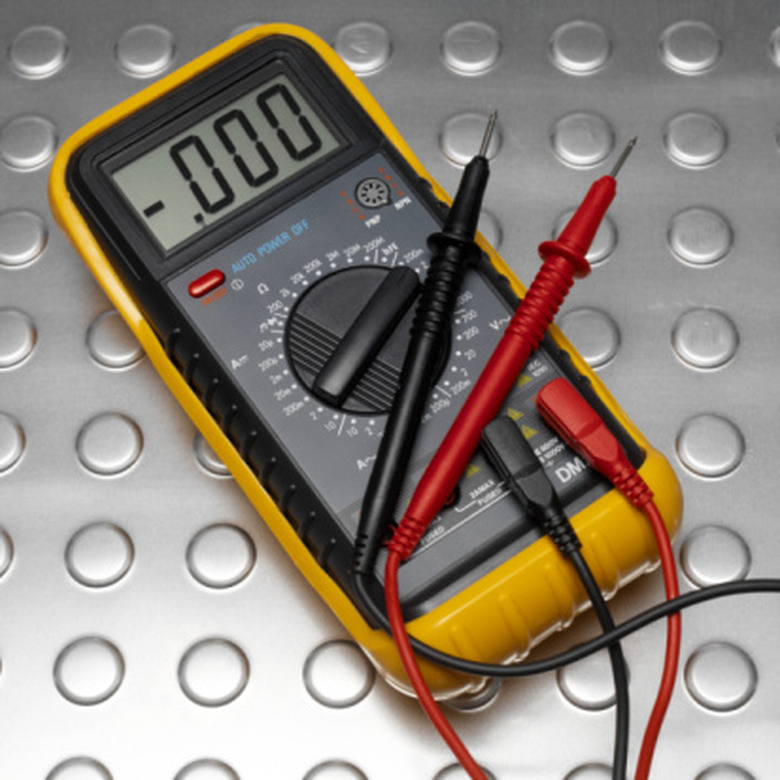How To Test A 9-Volt Battery
Testing a 9-volt battery will let you know if it is out of electrical energy. A battery produces and stores energy for future use by a chemical reaction between two different metals. The energy in batteries creates a voltage difference between their positive and negative terminals. The square 9-volt battery has the size necessary to create a voltage of nine volts. When the 9-volt battery is installed in a device, the voltage difference between its terminals causes electrical energy to flow. After time, the battery will become worn out and cannot create the nine volts it could when first manufactured.
Step 1
Plug the red lead of the multimeter into its positive port. Connect the black lead of the multimeter into its negative port. On some multimeter models, the negative port is called "common" or "ground." Each lead has a metal probe on its other end.
Step 2
Turn on the multimeter. Rotate the measurement dial to the direct current (DC) voltage setting. On most multimeter models, DC voltage is denoted by a capital letter "V" with straight lines above it.
Step 3
Touch the red multimeter probe to the positive terminal of the 9-volt battery. Touch the black multimeter probe to the negative terminal of the 9-volt battery. The voltage of the battery will appear on the multimeter screen. If the measured voltage is not at least eight volts, replace the battery.
References
- "Physics for Scientists and Engineers With Modern Physics"; Raymond A. Serway, et al.; 2009
Cite This Article
MLA
Hirsch, William. "How To Test A 9-Volt Battery" sciencing.com, https://www.sciencing.com/test-9volt-battery-8129945/. 24 April 2017.
APA
Hirsch, William. (2017, April 24). How To Test A 9-Volt Battery. sciencing.com. Retrieved from https://www.sciencing.com/test-9volt-battery-8129945/
Chicago
Hirsch, William. How To Test A 9-Volt Battery last modified March 24, 2022. https://www.sciencing.com/test-9volt-battery-8129945/
